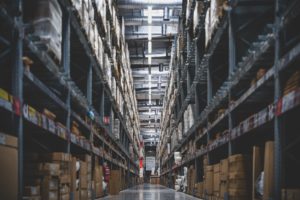 Not many people are aware of the warehouse conditions throughout the country. However, with workplace conditions becoming a popular headline in response to the Coronavirus, many people wonder what enhancements can be made to improve working conditions across a spectrum of industries. While there are a wide variety of machines that can reduce physical workload for employees in a warehouse setting, both the workers and the equipment must be able to withstand the conditions.
Not many people are aware of the warehouse conditions throughout the country. However, with workplace conditions becoming a popular headline in response to the Coronavirus, many people wonder what enhancements can be made to improve working conditions across a spectrum of industries. While there are a wide variety of machines that can reduce physical workload for employees in a warehouse setting, both the workers and the equipment must be able to withstand the conditions.
So, what does it take to withstand a warehouse environment?
The Human Condition
Warehouses are designed to be efficient, meaning that they typically don’t feature anything that is not a necessity. For this reason, they are often not climate controlled, not as routinely cleaned, and can house an expansive selection of heavy machinery. Studies have shown that more than half of Americans have reported exposure to unpleasant and potentially hazardous working conditions – some of the most common complaints being:
Extreme Temperatures
While OSHA does maintain that employers are responsible for providing a place of employment free of hazards that are likely to cause death or serious injury, there is no set temperature limits for warehouses. Because there is a constant flow of goods in and out, this often results in spikes either high or low in temperature (dependent on the weather). In addition to fluctuating temperatures, warehouses often face constant changes in humidity that can cause damage to equipment and discomfort for employees.
Warehouse Dust
Another symptom of the constantly moving parts within a warehouse, dust and dirt is another common issue within warehouses. Simple, everyday movements can cause surface dust to go airborne. Once in the air, dust can cause a variety of issues ranging from simple bronchitis to COPD.
While both of these issues are often handled with safety measures (i.e., frequent breaks to combat exposure to extreme temperatures or dust masks for protection against irritants), it begs the question of how equipment is affected by these conditions. Are there safety measures put into place for equipment?
The UniMove is Designed to Last
So, how does the UniMove’s design combat these issues? All UniMove units are superior in quality durability, and reliability in comparison to all other lifters on the market. Instead of having to be maintained once they run into environment issues, they are built to combat them from day one:
– The UniMove’s new copolymer resin lift tube is suitable in environments of -40°F to +240°F. That huge temperature range means that fluctuating warehouse temperatures will not damage the tubing used. For added protection, the lift tube is also inert to all acid and alkaline contact.
– All units have stainless steel construction for all lift tube components, top swivel assembly, suction feet, and filter housing. This makes easy cleaning for warehouse dust and ensures that the unit will not be affected by changing humidity levels.
– For added protection against any elements, there is a standard polyolefin power unit enclosure on all hi-capacity units.
If you are ready to implement a cost-saving and time-saving solution into your warehouse, consider the UniMove. Not only do they feature the highest porous load lift capacities in the industry, but they are built to withstand the sometimes-harsh conditions within the warehouse setting. Contact us today to learn more and get started on your journey towards a more efficient warehouse!
